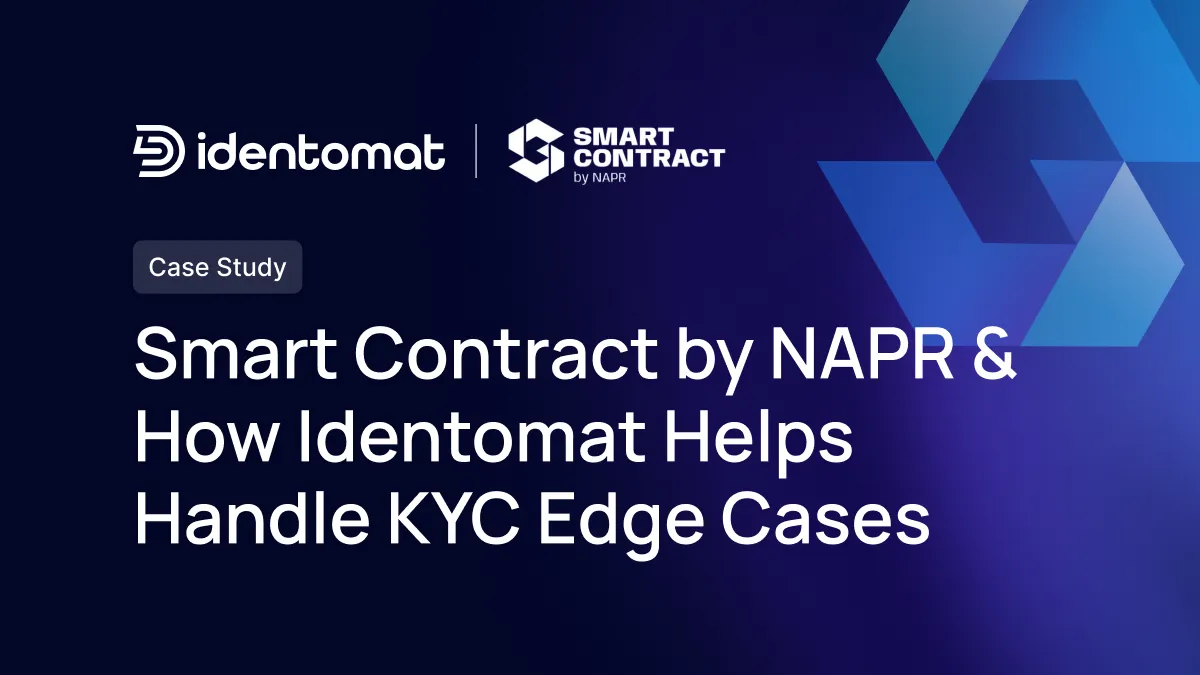
Who Is NAPR and How We Collaborate
The National Agency of Public Registry (NAPR), under the Ministry of Justice of Georgia, has long been recognized for its pioneering approach to digital governance. Through continuous innovation, it enables Georgian citizens to register property, manage legal contracts, and even complete transactions remotely, from anywhere in the world.
NAPR offers 300+ services to individuals and legal entities through Public Service Halls, Community Centers, territorial offices, and authorized users. These services include the registration of immovable property rights, public-law restrictions, tax liens and mortgages, movable and intangible property rights, entrepreneurs and non-entrepreneurial (non-commercial) legal entities, political associations, economic activities, and more.
With approaches rooted in innovation and modern technology, NAPR strives to create products and services tailored to the current and future needs of society. One of its flagship initiatives, Smart Contract by NAPR, is a digital platform that enables remote property transactions and real estate registration through fully online verification and digital signatures, eliminating the need to visit a notary or registry office in person.
To make such remote transactions possible, every stage of the process must ensure absolute trust: the system must verify that both parties are exactly who they claim to be - no exceptions.
That’s where Identomat plays a crucial role.
By integrating Identomat’s AI-powered identity verification and liveness detection technologies, NAPR securely authenticates users in real time - ensuring that every transaction is both legally valid and fraud-proof.
Our collaboration has been highly productive, helping numerous customers access NAPR’s services remotely and securely through Identomat. Now, we’d like to take you behind the scenes and share one of our case studies - showcasing the true power of innovation.
Case Study
Encountering the problem
During one of the Smart Contract by NAPR sessions, a Georgian citizen initiated the standard remote identification and verification process required to participate in a property transaction.
As part of NAPR’s security protocol, the citizen was asked to complete two essential steps using Identomat’s technology:
1. Document Verification - capturing and uploading a photo of their biometric passport.
2. Biometric Verification - completing a dynamic selfie, which uses facial movements to confirm both identity and liveness in real time.
The process began smoothly, the passport photo was successfully validated. However, during the biometric step, the system flagged a low facial match score, meaning the user’s current facial features did not sufficiently align with the biometric data extracted from the passport photo.
Following NAPR’s standard procedure, the citizen was allowed several additional attempts (up to five retries) to successfully complete verification. Each time, the user was provided with detailed guidance to improve the process - including:
• Adjusting lighting and avoiding shadows
• Removing accessories covering parts of the face (such as a headband)
• Looking directly at the camera
• Keeping a neutral facial expression
• Repositioning the face within the on-screen oval
Despite these adjustments and multiple attempts, each verification attempt returned the same result: a low facial match rate.
The technology was clearly identifying a genuine mismatch between the stored biometric data from identification documents and the user’s current appearance.
Searching for the cause of the problem
After several unsuccessful verification attempts, NAPR initiated a review to understand why the citizen’s biometric verification consistently failed.
Upon follow-up, the citizen explained that they had undergone multiple facial plastic surgeries since obtaining their biometric passport in 2020. As a result, their current appearance differed significantly from the facial image embedded in the passport’s biometric chip.
This discovery explained the repeated low match rate: the facial matching system was functioning exactly as intended - Identomat’s algorithm accurately detected the biometric divergence between the passport photo and the user’s present-day appearance.
Why This Case Matters
No face stays the same forever. Over time, aging, facial hair, makeup, and minor lifestyle changes naturally alter a person’s appearance. Modern biometric systems are designed with this reality in mind, they must recognize the same person despite these small, everyday variations. A good verification system should adapt, not block.
But when those changes go beyond the natural - for instance, after facial surgeries that significantly reshape key biometric markers like the eyes, nose, or jawline - the system must react differently. In such cases, a mismatch isn’t a failure; it’s a sign that the system is doing its job - detecting that the face presented no longer corresponds to the stored biometric identity.
This balance between tolerance and precision is what defines the real-world reliability of identity verification technology. Identomat’s system struck that balance perfectly - identifying meaningful differences that separated the user’s current face from their official biometric record.
Yet this case raises broader questions shaping the future of digital identity - for instance, how do we distinguish real people from realistic imitations?
Today’s fraudsters use deepfakes, face swaps, and AI-generated personas to bypass security systems that rely on static images or simple motion prompts. In this environment, even the most advanced facial match algorithms need reinforcement from dynamic liveness detection and anti-spoofing checks - technologies that confirm not just who a person is, but whether they’re real and present.
That’s why Identomat’s integrated system - combining facial matching, liveness, and anti-spoofing intelligence - is so critical. It ensures that:
• Only legitimate users pass verification
• Fraudulent or mismatched identities are immediately flagged
• Legal and financial transactions remain secure, compliant, and trustworthy
Ultimately, this case underscores a shared commitment between NAPR and Identomat: building consumer confidence and digital integrity in a world where identity can be imitated, but trust cannot.
NAPR’s Perspective:
"The National Agency of Public Registry (NAPR) has introduced a groundbreaking Smart Contract service that positions Georgia at the forefront of global digital transformation in property rights registration.
The smart contract is the first service of its kind globally and is the result of a complex collaboration involving legal experts, bankers, IT professionals, leading KYC vendors, and government authorities. Consequently, the smart contract product stands as a strong example of a successful Public–Private Partnership.
This multidisciplinary approach ensures that the service is not only legally sound and technologically advanced, but also strategically aligned with public policy objectives and supported through strong collaboration between the public and private sectors.
Through the smart contract, transaction parties can independently, without intermediaries (brokers/real estate agents) and lawyers, conclude real estate transactions, pay the price, and register real estate from anywhere in the world. Consequently, smart contract users save costs for intermediaries and lawyers' services and do not need to obtain powers of attorney and other authorizations, use additional notary services, etc.;
Accurate verification of counterparty identity is the cornerstone for successful registration of any real estate transaction, whether done remotely or in person. In this context, having a reliable technology partner like Identomat is essential.
The case at hand demonstrates the reliability of Identomat’s AI-powered verification system and its ability to handle even non-standard situations with consistency and accuracy. The service correctly identified appearance differences and produced a negative result across all attempts - exactly as it should.
This case also shows that Smart Contract by NAPR has built-in safeguard mechanisms to ensure the integrity and reliability of every smart contract session, fully meeting modern technological standards and international compliance requirements."
-Elene Grigolia, Project Manager - World Bank GRAIL Project "Enhancement of Land Administration Service Delivery and Building Digital Governance Infrastructure”
Identomat's Perspective:
"We see this case as a clear example of why precision matters in identity verification. Our technology was able to detect post-surgical facial differences that traditional methods might have overlooked. This level of accuracy is exactly what modern institutions need to maintain trust in today’s digital ecosystems - especially in the face of growing threats like identity theft and deepfakes.
We’re proud that our solutions speak for themselves through real-world results like this one. But what makes us even happier is knowing that we’re helping businesses and institutions strengthen their security and streamline their processes - all at a fraction of the traditional cost."
-David Lomiashvili, CEO and Co-Founder of Identomat
The NAPR case underscores one clear truth: accuracy and integrity in identity verification are non-negotiable.
With Identomat, organizations like NAPR can operate securely, confidently, and globally - knowing that every verification is backed by cutting-edge AI, continuous innovation, and full compliance with international standards.
Ready to enhance your verification process with Identomat’s trusted solutions?




.webp)